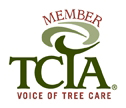|
Help Your Trees Resist Tree PestsOn your property, insects and microorganisms abound. This is a natural and beneficial state, since insects and microorganisms are key components in nutrient recycling, decomposition, plant succession, natural pest control, and wildlife habitat. “A landscape without insects and microorganisms would be a very unhealthy environment,” notes Peter Gerstenberger, senior advisor for safety, compliance and standards for the Tree Care Industry Association. “A healthy property is a functioning ecosystem with young, mature, and even dead trees". Periodic outbreaks of destructive tree pests, as well as diseases, occur as part of natural fluctuations in ecosystems. The actions of homeowners make these outbreaks more severe or lessen their impact locally. To promote a healthy landscape and to prevent pest outbreaks, take steps to ensure diversity and vigor on your property. Increase diversity A diversity of tree ages also reduces the risk of pest outbreaks. As with species diversity, age diversity increases the complexity and stability of the ecosystem. A natural balance of organisms is more likely to develop as age diversity increases. For example, potential pests of young trees could be regulated by parasites and predators already well established on older trees. A healthy landscape is less susceptible to pest outbreaks and is more resilient if an outbreak does occur. When trees are overcrowded in your landscape, competition for light, water, and nutrients results in increased stress. Trees under stress are more likely to be attacked by pests. The first clues of a tree health problem may be symptoms like yellowing needles or leaves, thinning foliage or dieback on upper limbs. These problems may be caused by tree pests or disease pathogens; or they may arise from “abiotic” factors like soil problems, construction damage, drought, pollution, or herbicide injury. We’ll be happy to examine your trees to find the source of the problem and recommend treatments. Borers -- Read More. . . Emerald Ash Borer -- Read More. . . Bagworms -- Read More. . . Hemlock Woolly Adelgid -- Read More. . . Stink Bugs -- Read More. . .
More Tree Health and Telltale Signs
To Scruggs Tree Home from Tree Pests Page
|

